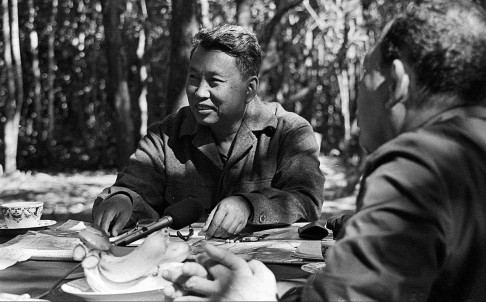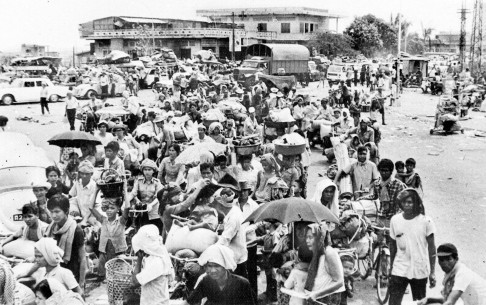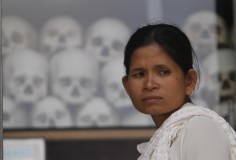Cambodian survivors scarred by ‘killing fields’ under Pol Pot’s Khmer Rouge
When Pol Pot and the Khmer Rouge arrived victorious in Phnom Penh 40 years ago, crowds cheered, unaware of the horrors to come
PUBLISHED : Friday, 17 April, 2015, 10:41pm
UPDATED : Friday, 17 April, 2015, 10:58pm
Agence France-Presse in Phnom Penh

Khmer Rouge leader Pol Pot. Photo: Reuters
Black-clad Khmer Rouge soldiers charged into Phnom Penh and were welcomed with cheers, remembers Chhung Kong, a teacher in the Cambodian capital during the 1970s.
Few foresaw the horrors that lay ahead as Pol Pot's communist army, victorious over the US-backed republican army of Lon Nol, seized control early on April 17, 1975.
Four years later Chhung had lost 16 of his relatives to the regime, Phnom Penh was deserted and his school transformed into the Tuol Sleng, or S21, torture chamber - one of the most grotesque emblems of a paranoid rule that wiped out a quarter of Cambodia's population.
Tearful survivors yesterday marked 40 years to the day since the Khmer Rouge entered the city.

A few hundred people, including monks and elderly regime survivors, gathered early yesterday at Choeung Ek - the most notorious of the regime's "killing fields" - on the capital's outskirts, burning incense and saying Buddhist prayers at a memorial stupa housing the skulls and bones of victims.
Memories of the bloody agrarian revolution, which left up to two million dead from starvation, overwork or execution, remain seared in the mind of Chhung, now 71.
"At first people were cheering, waving flags... we didn't think about the death and danger that was coming," he says, sitting inside his office in Phnom Penh, where he now practises as a lawyer.
"About 10 or 11am the same day, the Khmer Rouge soldiers ordered us off the streets and to start leaving the city. They said it was for only a few days."
The summer sun was strong, Chhung recalls, and many of the soldiers had one trouser leg rolled up to the knee. Others coralled the evacuees by firing AK-47s into the air, strings of extra bullets across their chests.
Tens of thousands of people were marched for days out of the city, some carrying the very young while others pushed the sick along on hospital beds, and soon Chhung started to see bodies littering the roadsides.

A woman stands in front of the stupa containing human skulls.
A few days later Phnom Penh was empty, its entire population of two million relocated to work in the countryside in one of the largest forced migrations in modern history.
The sick, elderly and very young soon perished, as "bourgeois" city dwellers were forced to scratch a living from the parched soil.
By the time the tyrannical rule of Pol Pot - or "Brother Number One" - ended four years later, an estimated two million Cambodians had been killed as the Khmer Rouge drove the country back to "Year Zero".
"Forty years ago Pol Pot turned Cambodia into a hell - a ghost land," Huot Huorn, 67, said with tears in her eyes after lighting incense yesterday for the 36 relatives she lost to the regime.
"I still hate that regime... their sins are vivid in my eyes now. They starved us, jailed people with no food and water until they died... I saw them smash children's heads against a tree trunk."
Only after the regime was forced out by Vietnamese soldiers in 1979 did the scale of its atrocities emerge, with the bones of thousands of victims - including children - uncovered at mass graves across the country, including at Choeung Ek.
Many who were seen as "enemies of the revolution" suffered at Phnom Penh's notorious torture house Tuol Sleng.
The former school-turned-torture-chamber has also been preserved as a grisly testament to the horrors of the era, which ended when the Khmer Rouge were forced to retreat to jungle hideouts.
In 2010, a UN-backed war crimes court sentenced former Tuol Sleng prison chief Kaing Guek Eav, alias Duch, to 30 years in prison - later increased on appeal to life - for overseeing the deaths of 15,000 people.
He was the first person to be held accountable for the regime's crimes.
Last August the two most senior surviving Khmer Rouge leaders - Nuon Chea, 88, known as "Brother Number Two", and former head of state Khieu Samphan, 83 - were given life sentences for crimes against humanity. Both have appealed.
